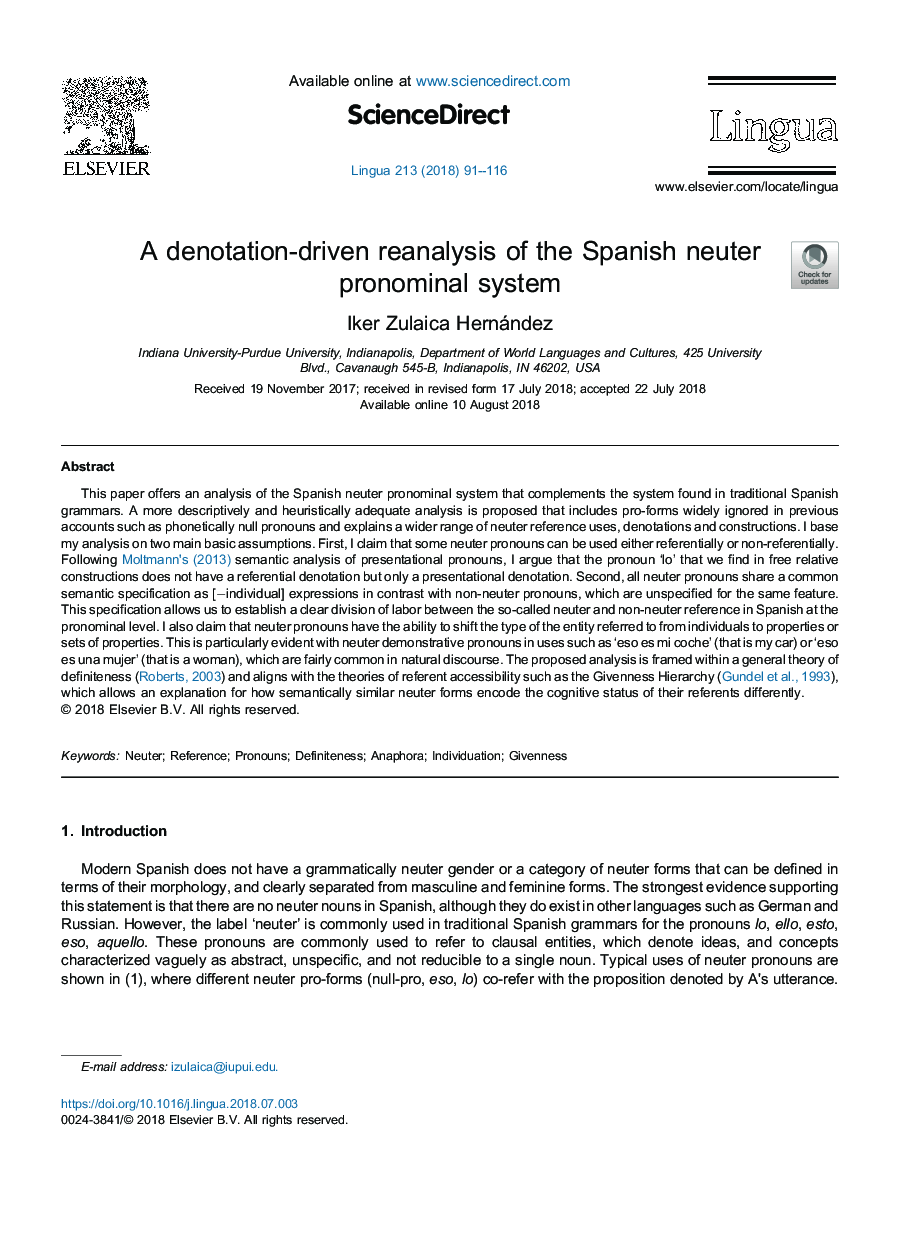| کد مقاله | کد نشریه | سال انتشار | مقاله انگلیسی | نسخه تمام متن |
|---|---|---|---|---|
| 10153601 | 1666214 | 2018 | 26 صفحه PDF | دانلود رایگان |
عنوان انگلیسی مقاله ISI
A denotation-driven reanalysis of the Spanish neuter pronominal system
ترجمه فارسی عنوان
بررسی مجدد واژگانی سیستم مستعمره اسپانیایی
دانلود مقاله + سفارش ترجمه
دانلود مقاله ISI انگلیسی
رایگان برای ایرانیان
کلمات کلیدی
موضوعات مرتبط
علوم انسانی و اجتماعی
علوم انسانی و هنر
زبان و زبان شناسی
چکیده انگلیسی
This paper offers an analysis of the Spanish neuter pronominal system that complements the system found in traditional Spanish grammars. A more descriptively and heuristically adequate analysis is proposed that includes pro-forms widely ignored in previous accounts such as phonetically null pronouns and explains a wider range of neuter reference uses, denotations and constructions. I base my analysis on two main basic assumptions. First, I claim that some neuter pronouns can be used either referentially or non-referentially. Following Moltmann's (2013) semantic analysis of presentational pronouns, I argue that the pronoun 'lo' that we find in free relative constructions does not have a referential denotation but only a presentational denotation. Second, all neuter pronouns share a common semantic specification as [âindividual] expressions in contrast with non-neuter pronouns, which are unspecified for the same feature. This specification allows us to establish a clear division of labor between the so-called neuter and non-neuter reference in Spanish at the pronominal level. I also claim that neuter pronouns have the ability to shift the type of the entity referred to from individuals to properties or sets of properties. This is particularly evident with neuter demonstrative pronouns in uses such as 'eso es mi coche' (that is my car) or 'eso es una mujer' (that is a woman), which are fairly common in natural discourse. The proposed analysis is framed within a general theory of definiteness (Roberts, 2003) and aligns with the theories of referent accessibility such as the Givenness Hierarchy (Gundel et al., 1993), which allows an explanation for how semantically similar neuter forms encode the cognitive status of their referents differently.
ناشر
Database: Elsevier - ScienceDirect (ساینس دایرکت)
Journal: Lingua - Volume 213, October 2018, Pages 91-116
Journal: Lingua - Volume 213, October 2018, Pages 91-116
نویسندگان
Iker Zulaica Hernández,
